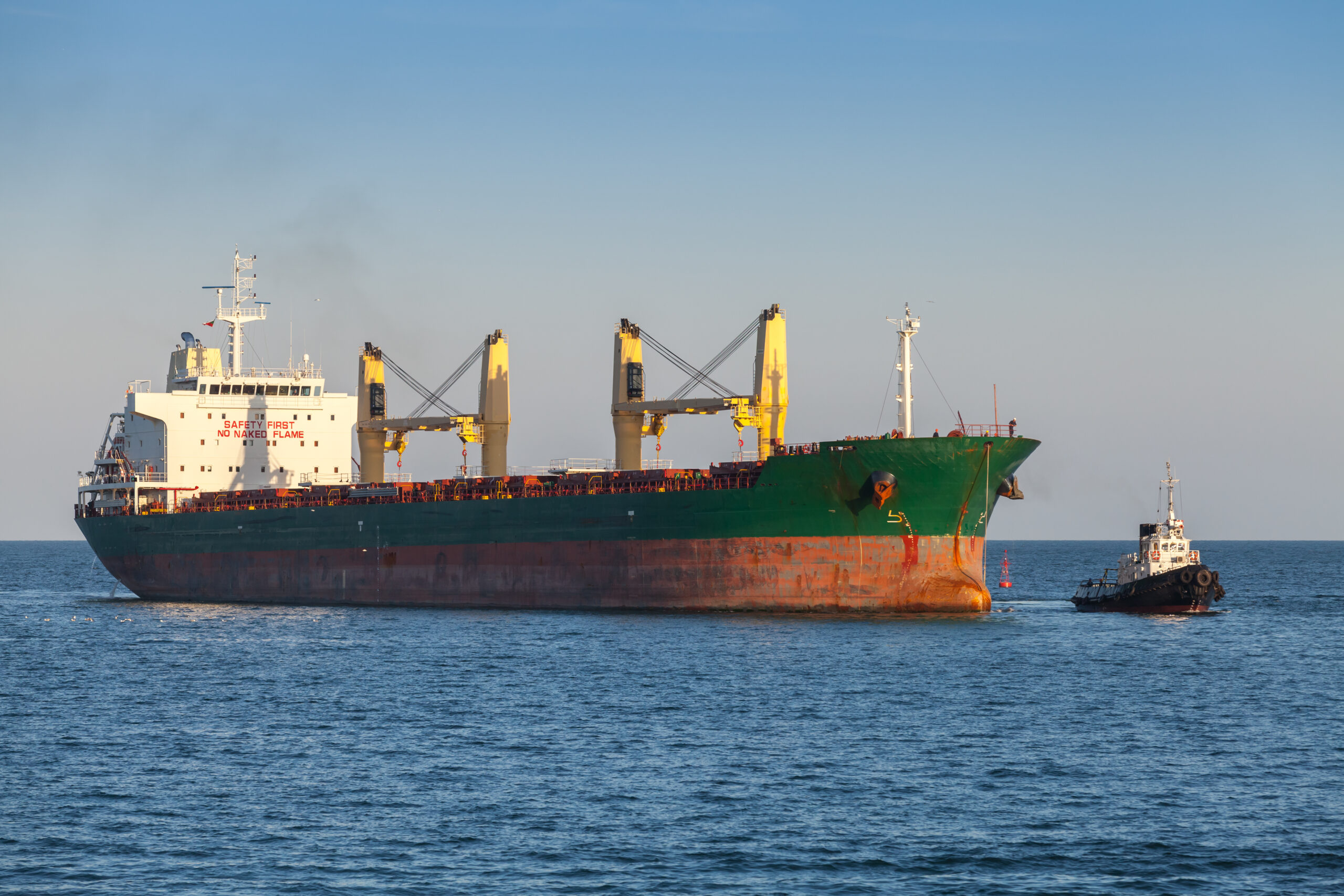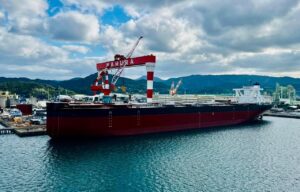Newbuilding orders hit their lowest 1H total since 2017 at 169 vessels (down c.26% YoY), and S&P volumes dropped c.36% YoY to 425 sales, according to Veson Nautical’s 2025 mid-year shipping market report.
The capesize values climbed c.7.7% in 1H 2025 on firm iron ore demand and limited fleet growth, while most other segments saw declines in values. Furthermore, the demolition stayed minimal at 34 vessels, as firm earnings kept older ships in service.
The latest data from BRS Shipbrokers shows that dry bulker newbuilding orders slowed sharply in 2025, with panamax and supramax orders plunging 89% and 65% y-o-y (from Jan-Jul) respectively.
Greek owners, once a key market driver, have also scaled back significantly, while existing fleets remain relatively young.
Additionally, the average age of the active panamax fleet is 13.5 years, while supramaxes stand at 11.8 years, indicating they still possess considerable service life ahead.
BRS attributed the drop to high newbuilding prices, uncertainty over green fuel technologies, and geopolitical risks, including potential US fees on Chinese-built vessels.
“With many owners cautious despite healthy cash reserves, the market has shifted to a “wait-and-see” mode, a pause that could reshape fleet fundamentals in the next 2–3 years,” BRS Shipbrokers explained.
Meanwhile, 34 bulkers (2.49 mln Dwt) were delivered in June, pushing the global dry bulk fleet to 1,036 mln Dwt, 3.19% above one year earlier. BRS noted in its dry bulk monthly report (July edition) that secondhand transactions reached 44 units in June, which slipped by 44% m-o-m and dropped by 48% y-o-y.
Greece’s Nasdaq-listed shipowner Star Bulk, which remains optimistic about the longer-term dry bulk market, is currently focused on ship sales as there are no signs that it will be active on the buying side.
“Despite near-term challenges due to geopolitical tensions, we remain optimistic about the dry bulk market longer-term, driven by the low order book and IMO regulatory tailwinds. We believe Star Bulk is well prepared, with a versatile fleet, strong balance sheet and proactive approach to take advantage of market opportunities,” said the company’s chief Petros Pappas.
On the other hand, the Greek drybulk owner and operator EuroDry keeps its vessels on short term charters, and considers entering into year-long charters for a portion of its fleet if the markets improve further.
As it is reported, the shipowner is looking at renewal opportunities of its elder vessels and financing options that could allow the company to expand its fleet in “accretive ways.”
The company has currently a fleet of 12 vessels, including 4 panamax drybulk carriers, 5 ultramax drybulk carriers, 2 kamsarmax drybulk carriers and 1 supramax drybulk carrier. EuroDry’s 12 drybulk carriers have a total cargo capacity of 842,886-dwt.
After the delivery of two ultramax vessels in 2027, the company’s fleet will consist of 14 vessels with a total carrying capacity of 969,886-dwt.
“As discussed in previous presentations of our chartering strategy, we have kept our vessels on short term charters when rates were low and at non-profitable levels. However, if the markets improve further, we will consider entering into year-long charters (physical or through FFA’s) for a portion of our fleet to lock-in positive cash flow. At the same time, we are looking at renewal opportunities of our elder vessels and financing options that could allow us to expand our fleet in accretive ways,” commented Aristides Pittas, chairman and CEO of EuroDry, in the company’s report for the second quarter 2025 and six-month period.
The company’s chief executive Aristides Pittas added: “During the second quarter of 2025 the drybulk market recovered a bit but the rebound was not sufficient to return the company to profitability. In July 2025, the market remained strong approaching the breakeven rate level of our fleet before giving up some of the gains in early August, a month, though, which is traditionally seasonally weak. If the present level of rates is maintained during August and, more so, if it improves, as usually happens during September, we would expect to have a better third quarter in terms of financial results as all our vessels are employed in short-term charters or linked to market index levels.
“The near-term outlook is dependent on the geopolitical and overall macroeconomic developments with the effect of the US imposed tariffs and the countermeasures taken by other countries being at the forefront of the uncertainty on the demand side. In addition, the recent attacks on two bulk carriers in Red Sea only increase the uncertainty and, generally, help higher demand for vessels as even fewer owners and operators would be crossing the area following the attacks.”



